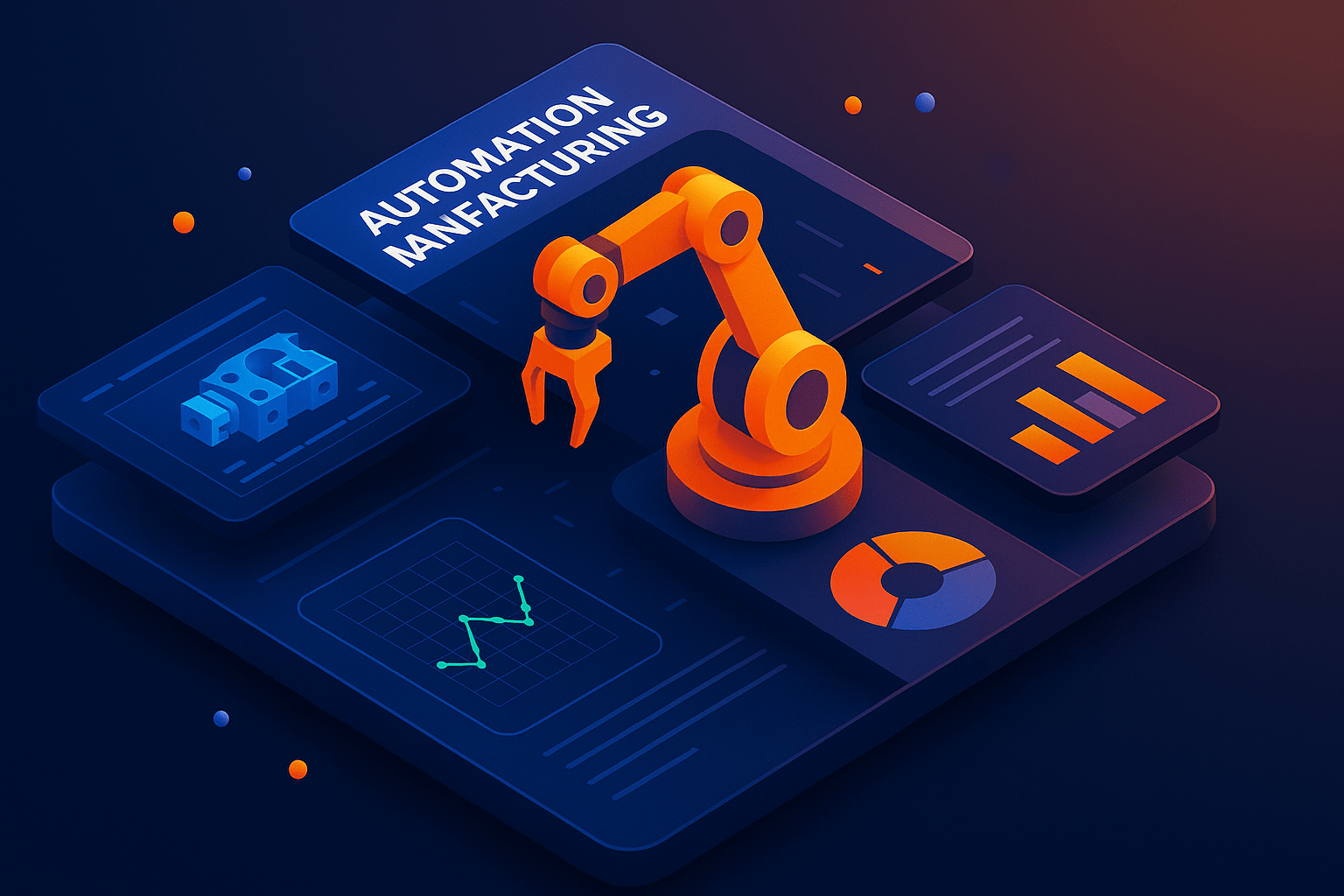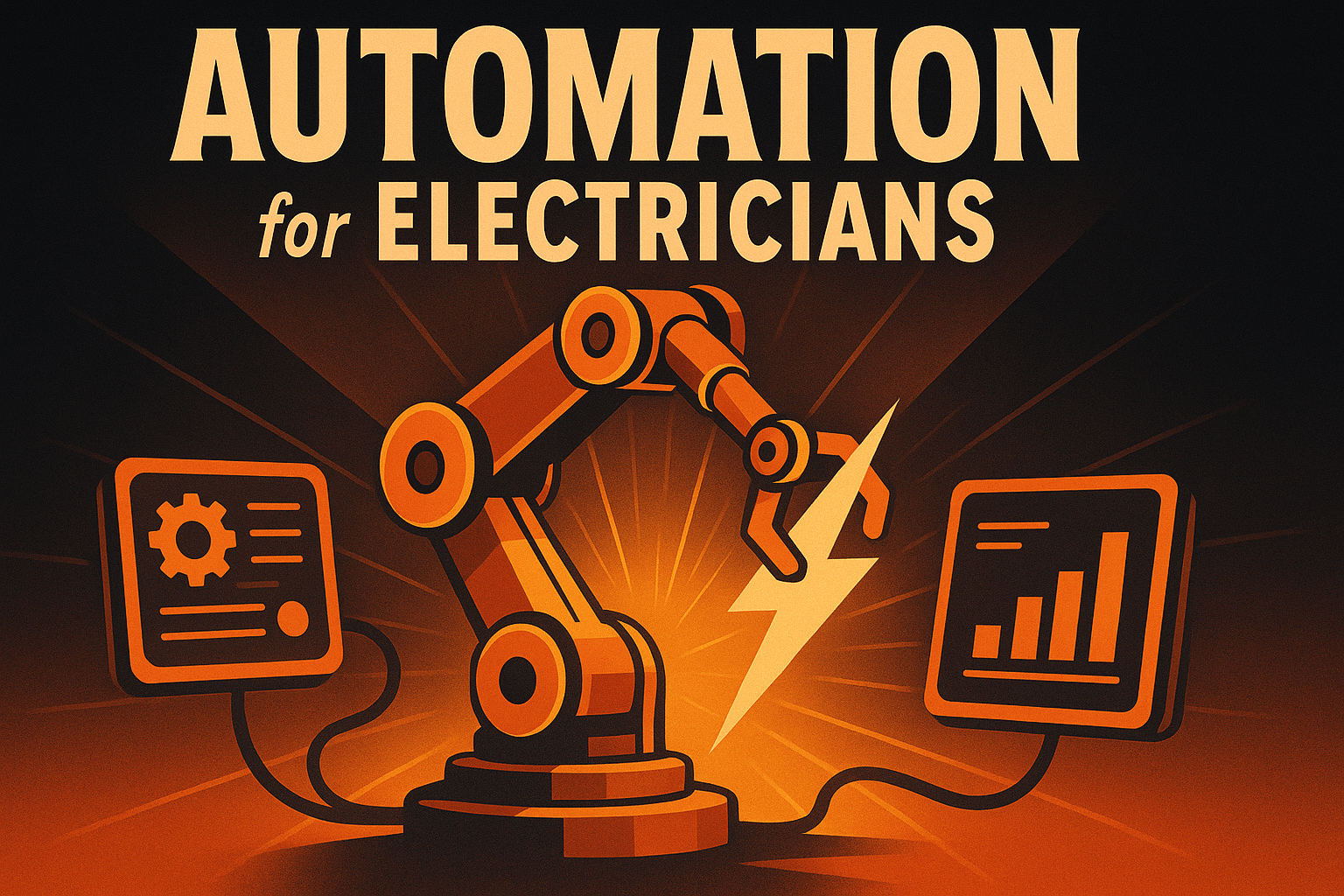No More Guesswork: Data-Led Automation for Manufacturing
by Design Delulu Editorial · September 28, 2025

Smart, fast, and measurable. Here's how Automation helps Manufacturing win.
Manufacturing companies are drowning in data but starving for actionable insights. While production lines hum with sophisticated sensors and smart machinery, many manufacturers still rely on gut feelings and outdated spreadsheets to make critical business decisions. This disconnect between operational excellence and data-driven strategy is costing companies millions in missed opportunities, inefficient processes, and competitive disadvantage.
The solution isn't more data—it's smarter automation that transforms raw manufacturing metrics into strategic advantage. When implemented correctly, data-led automation doesn't just optimize individual processes; it creates a competitive moat that compounds over time, driving measurable growth across every aspect of your manufacturing operation.

Overview
Smart, fast, and measurable. Here's how Automation helps Manufacturing win.
Manufacturing automation has evolved far beyond simple robotic assembly lines. Today's data-led automation integrates seamlessly with your existing systems to provide real-time insights, predictive maintenance capabilities, and automated decision-making that scales with your business. This comprehensive approach ensures every dollar invested in automation delivers measurable returns while positioning your company for sustained competitive advantage.
Key Benefits
- Event + ecommerce tracking with GA4/server tagging: Complete visibility into customer journeys and conversion paths, from initial awareness through post-purchase engagement
- Source-of-truth dashboards in Looker Studio: Centralized reporting that eliminates data silos and provides stakeholders with consistent, actionable insights
- Attribution modeling that matches your funnel: Accurate measurement of marketing effectiveness across complex B2B manufacturing sales cycles
- Governance for consistent, clean data: Established protocols and automated quality checks that ensure data integrity at scale
- Predictive maintenance optimization: Machine learning algorithms that predict equipment failures before they occur, reducing downtime by up to 50%
- Supply chain visibility: Real-time tracking of inventory levels, supplier performance, and demand forecasting to optimize working capital
How It Works
- Discovery & Goals: Clarify outcomes, constraints, and success metrics through comprehensive stakeholder interviews and current-state analysis
- Blueprint: Design the strategy, architecture, and measurement plan with detailed technical specifications and implementation roadmap
- Build & Launch: Implement, QA, and deploy with tracking in place, including comprehensive testing protocols and rollback procedures
- Optimize: Iterate based on data; double down on what works through continuous monitoring, A/B testing, and performance optimization

Deliverables
- Comprehensive tracking plan: Detailed documentation of all events, conversions, and KPIs to be measured
- GA4/Server-side setup: Complete implementation of advanced analytics with custom dimensions and enhanced ecommerce tracking
- Executive dashboards: Role-specific reporting interfaces designed for different stakeholder needs and decision-making requirements
- Attribution model settings: Custom attribution rules that accurately reflect your manufacturing sales cycle and customer journey
- Automated alert systems: Proactive notifications for performance anomalies, equipment issues, and optimization opportunities
- Integration documentation: Technical specifications for connecting existing systems and future scalability
Best Practices
- Prioritize highest-impact pages and flows first: Focus initial efforts on areas with greatest potential for immediate ROI improvement
- Pair creative with measurement: Every asset has a KPI, ensuring marketing investments are directly tied to business outcomes
- Use templates and systems to scale quickly: Develop repeatable processes that can be applied across multiple product lines or market segments
- Close the loop with weekly reviews and quarterly resets: Establish regular cadence for performance evaluation and strategic adjustments
- Implement progressive data governance: Start with core metrics and gradually expand measurement sophistication as team capabilities mature
- Design for mobile-first experiences: Ensure all tracking and dashboards function seamlessly across devices used by field teams and mobile workforce
Industry-Specific Tips for Manufacturing
- Map search intent to Manufacturing buyer stages: Understand how prospects research solutions during long B2B purchase cycles and optimize content accordingly
- Use social proof and outcomes early in the journey: Leverage case studies, certifications, and industry awards to build credibility with procurement teams
- Measure against a single source of truth dashboard: Eliminate conflicting reports that undermine stakeholder confidence in data-driven decisions
- Ship small, test fast, keep compounding wins: Implement agile methodology adapted for manufacturing environments where changes require careful planning
- Integrate with existing ERP and MES systems: Ensure automation complements rather than conflicts with established manufacturing operations software
- Account for seasonal demand patterns: Build forecasting models that incorporate industry-specific cyclical trends and market dynamics
Case Studies & Results
Mid-Size Component Manufacturer
Challenge: 23% increase in raw material costs with no visibility into price impact across product lines
Solution: Implemented real-time cost tracking with automated pricing adjustments and margin protection alerts
Results: Maintained profit margins while competitors struggled, identified $2.3M in cost optimization opportunities
Implementation Timeline & Costs
Phase 1: Foundation (Weeks 1-2)
- Current state assessment and gap analysis
- Stakeholder alignment and success criteria definition
- Technical architecture design and approval
Phase 2: Core Build (Weeks 3-5)
- Analytics implementation and testing
- Dashboard development and user training
- Integration with existing systems
Phase 3: Optimization (Weeks 6-8)
- Performance monitoring and refinement
- Advanced feature rollout
- Documentation and knowledge transfer
Frequently Asked Questions
Let’s level up your Manufacturing business
Need services that actually move the needle for Manufacturing? See our approach, pricing, and timelines—then book a quick call.
Additional Resources
Related Reading

Discover how automation for electricians streamlines scheduling, invoicing, lead tracking, and customer follow-ups to boost revenue and efficiency. Get started today.

Discover how automation streamlines furniture & home decor operations with GA4 tracking, attribution modeling, and data-driven dashboards. Get your 90-day implementation roadmap.
